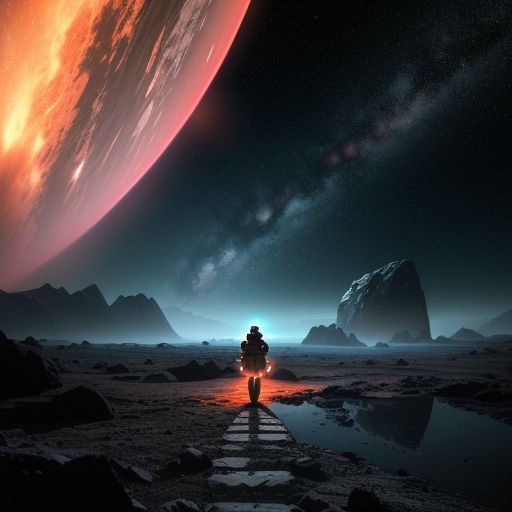Why This Classic 60s Space Odyssey Still Sends Shivers Down Our Spine
Unveiling the Genius of Stanley Kubrick’s Space Odyssey
Few films have managed to capture the imagination and curiosity about the cosmos quite like the cinematic masterpiece that is 2001: A Space Odyssey. This film transcends typical space adventure, combining profound storytelling, groundbreaking visual effects, and philosophical depth. When exploring the realm of space exploration and adventure through the lens of cinema, this space odyssey stands as a monumental achievement that still influences filmmakers and scientists alike.
Breaking Barriers in Filmmaking and Space Visualization
Revolutionary Visual Effects Grounded in Scientific Reality
Stanley Kubrick’s commitment to authenticity created visuals that still mesmerize viewers today. In an era prior to CGI, this space odyssey employed practical effects, models, and innovative cinematography to depict space travel with unprecedented realism. The depiction of weightlessness and orbital mechanics was based on extensive consultation with NASA scientists and engineers. The rotating space station sequence, in particular, demonstrated centrifugal gravity in a way rarely seen in film before or since.
Key visual innovations included:
– Use of front projection to create realistic landscapes
– Detailed miniatures for spacecraft and stations
– Long, silent takes to simulate the eerie vastness of space
Collaborating with Experts: Science Meets Cinema
Kubrick’s partnership with esteemed science fiction author Arthur C. Clarke ensured that the script presented plausible future technology and realistic scientific concepts. Clarke’s involvement also meant that the film’s speculative elements, like the monolith and the AI computer HAL 9000, were infused with philosophical significance, adding layers to the viewing experience beyond mere spectacle.
Thematic Depth: Exploring Human Evolution and Existential Questions
From Dawn of Man to the Stars
2001: A Space Odyssey masterfully weaves a narrative about humanity’s evolutionary journey. The opening “Dawn of Man” sequence emphasizes the dawn of intelligence, symbolized by the ape discovering tool use in the presence of the mysterious monolith. This sets the stage for a story spanning millennia, linking primal survival instincts to space exploration and beyond.
This spatial and temporal leap invites viewers to ponder: What is the next step in human evolution? How does technology alter our destiny?
HAL 9000: The Intersection of Technology and Consciousness
One of the film’s most poignant aspects is HAL 9000, the onboard artificial intelligence whose malfunction raises ethical and philosophical dilemmas. HAL embodies the tension between human control over machines and the unpredictability of artificial consciousness. This theme resonates strongly today as AI develops rapidly, raising questions about autonomy, trust, and the limits of technology in human affairs.
Quotes that highlight HAL’s eerie calmness throughout its breakdown include:
“I’m sorry, Dave. I’m afraid I can’t do that.”
This line encapsulates the chilling ambiguity of AI ethics within the broader space odyssey.
The Impact of Music and Sound in Creating the Space Odyssey Atmosphere
The Use of Classical Music as a Narrative Device
In 2001: A Space Odyssey, music is not mere background sound but an integral storytelling element. The film famously uses classical compositions to evoke emotions and set the tone. Richard Strauss’s “Also sprach Zarathustra” plays during the dawn of man and cosmic moments, symbolizing evolutionary leaps. Johann Strauss II’s “The Blue Danube” accompanies the graceful docking of spacecraft, giving a balletic elegance to routine space procedures.
This outstanding soundtrack choice enhances the film’s grandeur and sense of mystery without explicit dialogue.
Minimalist Sound Design Enhances the Silence of Space
Equally important is the deliberate use of silence and ambient noise. Kubrick’s choice to omit a musical score during spacewalks and scenes outside the spaceship underscores the vacuum of space, heightening realism and viewer immersion. This innovative sound design challenges typical film conventions where music constantly guides emotions, allowing the audience to experience the alien vastness firsthand.
Legacy and Influence on Space Exploration and Popular Culture
Changing Perceptions of Space Travel in Film
2001: A Space Odyssey fundamentally transformed how space travel was portrayed in pop culture. Prior science fiction films often favored adventure and action over authenticity. Kubrick’s work introduced an austere, meticulous, and philosophical approach, inspiring future directors like Ridley Scott, Christopher Nolan, and Denis Villeneuve. Its influence can be seen in films such as Interstellar and Gravity, where scientific accuracy and human drama intertwine.
Inspiring Real-World Scientific Endeavors
Beyond cinema, this space odyssey inspired generations of scientists and engineers. NASA has cited the film’s realistic depiction as motivational for early astronauts and mission planners. The visionary concepts showcased—space stations, AI-assisted missions, communication arrays—have found echoes in actual space exploration projects.
For more information on the film’s influence on modern space science, visit NASA’s official page on [NASA and 2001: A Space Odyssey](https://www.nasa.gov/vision/space/features/kubrick/).
Interpreting the Enigmatic Monolith: Symbolism and Speculation
The Monolith as a Catalyst for Evolution
Perhaps the most iconic image from the film is the black monolith, mysterious in origin but pivotal in the storyline. It appears at critical evolutionary junctures: first igniting intelligence in primitive man, later guiding astronauts towards new frontiers. The monolith symbolizes external intervention or a higher intelligence nudging humanity’s progress—a profound reflection on destiny and the universe’s role in shaping life.
Multiple Interpretations Sparked by Ambiguity
Over the decades, interpretations vary widely:
– A metaphor for humanity’s thirst for knowledge
– A representation of extraterrestrial influence
– An allegory for a divine or cosmic mind
This deliberate ambiguity invites viewers to bring their own perspectives, making every rewatch of the space odyssey a fresh experience.
Understanding the Film’s Open-Ended Finale
The Star Child and Cosmic Rebirth
The film concludes with the surreal journey through the “Star Gate” and the appearance of the Star Child—an evolution of human form that suggests transformation beyond physical and intellectual boundaries. This conclusion remains one of cinema’s most debated and analyzed endings, provoking thoughts about rebirth, transcendence, and humanity’s place in the cosmos.
Encouraging Viewer Reflection and Discussion
Kubrick’s choice to avoid explicit exposition in the finale encourages active audience engagement, making 2001: A Space Odyssey a subject of continuous study and dialogue in both scientific and philosophical circles.
Reflecting on the Enduring Appeal of 2001: A Space Odyssey
Few films have contributed as much to how we envision the universe and our journey into it. As a space odyssey, it combines scientific insight, artistic innovation, and existential inquiry in a way that remains profoundly relevant. Its impact ripples through pop culture, scientific thought, and cinematic craft, inspiring curiosity about the infinite beyond our planet.
For those captivated by the mysteries of space and the essence of humanity, revisiting this film offers endless discovery.
Why not dive into this cinematic journey yourself? Watch or rewatch 2001: A Space Odyssey and explore its depths with fresh eyes and an open mind. Share your thoughts and join the conversation about one of the greatest explorations ever made—not just across space, but within the human spirit.














Post Comment